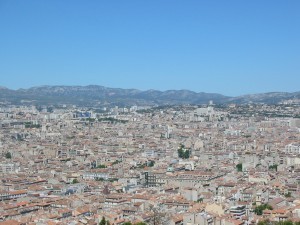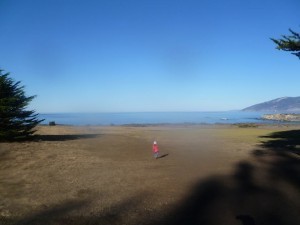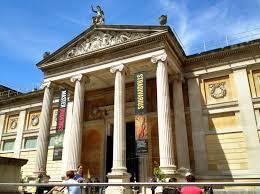Lisa Niver's Blog: We Said Go Travel, page 417
February 24, 2014
Avila Dog Beach, California
I’m pushing my two-year old daughter Zelia in a chain link swing at the pirate themed seaside park in Avila Beach.
She’s yelling “high-urr, fash-ter!”
I’m growling “Arrrrrr!”
Another couple sashaying their toddler in the adjacent swing asks me where I’m from. I say I live here.
“It must be nice to live in a place where other people go to vacation.” The dad says this without rancor, just a simple observation.
“Yes, yes it is.” I nod philosophically and my day is made.
I join my wife Marina. She is strolling our new puppy Willow and our two-month old baby Rui, the latter encased in our awesome Ergo, on the dog-friendly beach.
It is rolled up jeans and hooded sweatshirt type of weather, a crisp weekday morning and a blessedly empty beach with the perfect amount of mist. It grudgingly parts into sky blue ribbons and slate grey, sun-reflected ocean.
Seals bark and breach the water, boats rock to their own tidal rhythm and people roam and daydream with aplomb on the strip of cliffside trails or amble across the jutting pier with its tangled spidery legs.
Our puppy cavorts wildly atop the sandscape as it ripples alive with the high tide. She is unused to water and gets caught in the fast-moving froth, acting as if her paws have caught fire as she stilt walks comically to drier ground.
Everyone thinks we are crazy to have adopted a puppy the same timeframe we birthed our second infant girl. We agree but we wouldn’t have it any other way. There is something incredibly bonding when you’re at full emotional capacity. It makes you chisel out these rewarding kind of moments and appreciate them to the utmost glory.
We try to leave the house everyday and explore our beautiful public backyard, one of mountain, sea, highway or trail, all waiting to share its natural splendor with anyone willing to seek its treasure.
With a young family, world travel has been put on the backburner. This does not mean we are giving up our freedom behind shuttered windows and barred doors entrapping echoes of fernweh cries and full diapers.
I find inspirations in short naps, laughs and the interplay of ocean and light dancing like a kaleidoscopic looking glass. I used to find it in a passport, staring in glee at the myriad stamps while sighing morosely at the empty pages. I’ve moved on to other books for now.
An old white van is perched on the ridge overlooking the glittering expanse. In crudely duct-taped letters on the side of it is written “Dog Wash.” My eyes brighten as I leash my disheveled pup and go to investigate this strangely parked mobile business. I’m a little hesitant but decide paying a roadside groomer is likely better than alligator wrestling my dog with a cold garden hose at home.
I ask how much. Mexican music trumpets out tinny speakers and in a thick accent the man sitting comfortably in his cracked plastic chair outside the van jovially says, “Eight dollars!”
Sold.
He hums and gently wrangles Willow into a big tub. He shampoos, conditions, massages and clips her toenails with deft skill and soft commands. She comes out sparkling and we head to our truck, sitting contentedly inside the open-air camper shell while my wife tops off the baby. We make the short trip home, already planning our next big local adventure.
About the Author:Joe Amaral is a paramedic who spends most his time spelunking around the California central coast. His poetry and short stories have appeared worldwide in many awesome literary journals and anthologies, both in print and online.
Thank you for reading and commenting. Please enter our next Travel Writing competition and tell your story.
The post Avila Dog Beach, California appeared first on We Said Go Travel.
Marseille, France in bites
GOÛTEZ!
I have just had lunch– vin blanc and
grilled sardines and carottes à la crème
and saucisses pommes parmentier and oranges.
One must never drink vin rouge in the Midi,
on m’a dit.
– Katherine Mansfield, Letters
No matter the good, no matter the bad, one thing about life in France, magnified in the region of Provence is the freedom one has of never having to plan a meal. Incredible food simply appears. There’s never a need for turkey or gargantuan seventy-two ounce steaks or production lines of hot dogs and plops of charred meat patties. It is absolutely a fact that no one, not even one person, would or could ever desire or entertain such an errant thought as “microwave cooking”.
Breakfast: café au lait in a handle-less bowl that is of small cereal bowl dimensions. The milk must be heated in a pan on a gas burner. The breakfast pâtisserie might be as simple as an untranslatable buttery croissant or a tarte aux abricots or another of the choices in many bakeries have to tempt you with fresh every morning. Why the city architectures itself into a conglomeration of residences built above stores below: for the ability to descend a few flights of stairs into the odor of baking dough. The morning perfumes one with a hunger for life.
Lunch: might be as simple as saucisson and cheese with a boiled artichoke whose meat will be scraped off its hard leaves by the teeth just prior to dipping them into a spicy mustard/olive oil sauce. Perhaps some leftover daube– an onion, carrot, tomato, garlic, orange zest, beef, stew marinated in red wine. Or a sandwich from a vendor: merguez frites (heavy on the harissa), or poulet aux poivrons (chicken with red peppers); a bandolais (ground beef, onions, feta cheese, tomatoes, lettuce and really any other condiment desired). These sandwiches sunk into a one and a half foot long baguette and french fries are thrown in, actually put into the sandwich, to boot. Lunch that takes you to dinner.
Dinner: begins always with a bottle of red wine that should be sipped while preparing the meal. An olive oil, real Dijon mustard, and garlic dressing (diced red onions for a hint of extra flavor) reserved exclusively for a Medusa-like head of lettuce called pissenlit that is as bitter as its name for dandelion leaves indicates. To be accompanied by a few of the over five hundred kinds of cheeses available at the grocery store and a pissaladière: an onion tart resembling a small pizza, with black olives and a foundation/sauce of anchovy paste.
Dinner ends with one or two empty wine bottles. Desert is fresh fruit. Knowing that there will be three such meals the next day!
MARSEILLE NOIR
In neon and halogen light (all the streetlights are purposefully yellowed) and promises of bright tomorrow sunlight, night descends. It’s the nocturnal quotidian without as much traffic and noise and much better views of where they aren’t. Less people. Broad streets. Fresh cool air. The promise of money making’s frenzied day gone by, now it’s time to spend it, even if it’s not there to spend. The placidity of the port still with ships just barely bouncing in tidal flux. Emptied streets, except for the make-up plastered sad whores who were once truly beautiful, streetlights beckoning one to the next, assemblage of bars and restaurants, a glacier still open. Europe’s calmness, openness of nighttime which is definitely not rushing home to the kids of America, to crack deals gone smooth, things to do rather than sequester oneself in family and home.
As a fact of matter, Marseille at night is most romantic and inspiring. At any time of the day, a pizza and two bottles of wine can be enjoyed on any of its numerous and continuous beaches, without official hassle. The laws aren’t the same. There is no law against pleasure in France. Other than the proximity of yet another young couple who decide to do the same very close to your spot of infinity as they do so, decide to remove articles of clothing in an impromptu skinny-dip.
A few immediate eating spots: L’Américano featuring fine merguez, steak-hachés, pizza, even ice cream. Chez Paul’s in the anse of les Goudes: a cheap carafe’s of good wine, the finest view of the city outside of the city and the best pizzas; Chez Fonfon with one of the best bouillabaisses known to the area with its wonderful central location, hidden in its own calanque; the others of other places and others even waiting to be discovered. The city is open until the hours known as wee.
About the Author:Philip Kobylarz is a teacher and writer of fiction, poetry, book reviews, and essays. He has worked as a journalist and film critic for newspapers in Memphis, TN. His work appears in such publications as Paris Review, Poetry, and The Best American Poetry series. The author of a book of poems concerning life in the south of France, he has a collection of short fiction and a book-length essay forthcoming.
Thank you for reading and commenting. Please enter our next Travel Writing competition and tell your story.
The post Marseille, France in bites appeared first on We Said Go Travel.
February 23, 2014
Paradise (Pro)found in Mozambique
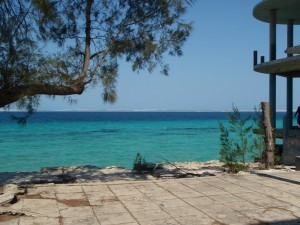 “It’s not just a pretty island; it’s a profound experience. I can’t explain it, but go, you’ll see.” Umm yeah, maybe, for dreamers, followers of fairies and wearers of crystals. I sceptically boarded “our” private boat from Inhassoro on mainland Mozambique, to this “profound experience” on Santa Carolina otherwise known by the whimsical as “Paradise Island”, part of the Bazaruto archipelago .
“It’s not just a pretty island; it’s a profound experience. I can’t explain it, but go, you’ll see.” Umm yeah, maybe, for dreamers, followers of fairies and wearers of crystals. I sceptically boarded “our” private boat from Inhassoro on mainland Mozambique, to this “profound experience” on Santa Carolina otherwise known by the whimsical as “Paradise Island”, part of the Bazaruto archipelago .
The sun seared my skin, and spray from the semi-rigid hull crunching into troughs of water slapped me with a kind of perverse respite. Finally slowing to a more dignified pace I loosened my numbing grip on the safety rope, wiped the stinging salt from tightly scrunched eyes and blinked to clear my vision. The last time I’d seen the water it had been a choppy inky blue, it was now the colour of Blue Curacao. The tranquil surface levelled to gentle swells. Ahead the Curacao became luminous aqua, then flawlessly clear, the pure white sand beneath glistening in the dancing rays of light that bent and refracted in the lapping water. Okay, so it was pretty, and tall palm trees dotted along the coastline did add an air of romance. I turned to my husband, Gerrit. “Nice place for a honeymoon.” He smiled and squeezed my hand.
Stepping off the boat into refreshing water my feet found firm but hedonistically soft sand. I scanned the shoreline – almost the full length of the 3.2 kilometre by 480 meter island. No signs of life. Silence seeped slowly into me. Ah well, the dry sand would burn like hell I was sure. Having grown up in sunny South African I knew all about hot sand and blistered feet. As I left a guilty trail in the comfortably warm pristine castor sugar sand I relaxed. Maybe its whiteness reflects the heat I mused, as the powder squeaked softly beneath my feet.
I sighed as I stretched out in a patch of welcome shade, my toes still luxuriating in the sand. The lyrics of Bob Dylan’s ‘Mozambique’ played in my mind. Back in the 60’s Paradise Island had been the playground of the rich and famous. They flocked to the glitzy casino hotel that dominated its main beach, landing on a private airstrip and revelling in the postcard perfection; while the war of indepence raged on the mainland with FRELIMO, the Mozambican Liberation Organisation fighting to overthrow Portuguese colonial rule. Poor Bob, overcome by the island’s beauty had been inspired to pen a frivolous romantic song, only to be condemned by ‘global social conscience’ when it was released in 1976 – the one year hiatus between independence and the ensuing 16 year long Mozambican civil war.
Unable to resist exploring we left the beach and walked hand in hand beneath the blank gaze of elegantly arched “streetlamps” stepping carefully along uneven grey paving stones, crisp blue-green grass spiking through the myriad cracks to the abandoned hotel. Shattered windows, broken tiles and missing taps lent her the faded air of an elderly beauty debauched by the good life; vandalised by the occupying troops during the latter part of the war. We crossed the island in a matter of minutes, and discovered a curved triangular chapel jutting from a rocky promontory over glistening turquoise water. The sagging chapel appeared to have stood empty along with the hotel, but braided leaves and freshly picked wildflowers adorning the entrance and inside indicated otherwise. Only later would we meet the island’s caretakers and chapel’s worshippers, when they emerged from the depths of the hotel ruins as the sun weakened, to check that we intended to leave.
Drenched with perspiration from the mild exertion of exploring the island, entering the soothing , buoyancy of the water was like passing through an invisible shield into a different realm. The dappled underwater world magnified by my diving mask existed as it had for centuries, impervious to the changes on land. Tropical fish in shades of yellow, pink, mauve and red drifted silently by like flowers swaying in the current. A flash of electric blue darted into an underwater cave. Sea cucumbers, starfish and corals were spotlighted in turn by shafts of sunlight, bouncing flashes of clarity in the cosseting cool. When hunger drove me reluctantly ashore I was astonished to find that we’d floated in suspended reality for hours. Palm shadows stretched across the beach as we tucked into a picnic of seafood and home baked bread, and sipped on a chilled spritzer.
I didn’t want to return to the mainland. I wanted to inhabit this abandoned corner of paradise, wrap myself in the perfect blue bubble of light, soft sand and whispering palm leaves. I wanted to keep a lookout for dolphins, dugongs and even mermaids, while I listened to Bob Dylan sing of romance in his Magical Mozambique.
About the Author: Nikki Meyer, author of Game for Anything, has lived and worked in the Kruger National Park, South Africa since 1992. She and her husband have an off-road trailer and spend their spare time exploring some of the more remote parts of Southern Africa, with a preference for beach and bush.
Thank you for reading and commenting. Please enter our next Travel Writing competition and tell your story.
The post Paradise (Pro)found in Mozambique appeared first on We Said Go Travel.
Kyoto- fantastic city in Japan
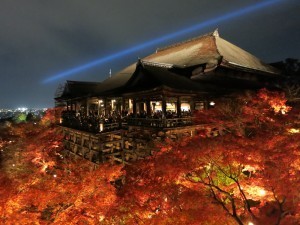 A place that inspires me to spend my time wisely with no regrets is Kyoto, the previous capital of Japan. I think there are three ingredients for the place where we can have a great time with no regrets– the place where we can experience original cultures, the place where we can enjoy in all seasons and the place where we can spend our time without safety problems. I am sure that Kyoto has all ingredients.
A place that inspires me to spend my time wisely with no regrets is Kyoto, the previous capital of Japan. I think there are three ingredients for the place where we can have a great time with no regrets– the place where we can experience original cultures, the place where we can enjoy in all seasons and the place where we can spend our time without safety problems. I am sure that Kyoto has all ingredients.
1. Place where we can experience original cultures
We can experience original cultures in Kyoto. Until 150 years ago, Japan had closed the door to foreign countries for a long time. Therefore, Japan has many original cultures which we cannot experience in other countries. Moreover, Kyoto had been the center of Japan for a long time so we can experience many of them in Kyoto. For example, Kyoto cuisine called Kyo-ryori and Japanese historical temples. Kyo-ryori is not only delicious cuisine but also the cuisine we can feel Kyoto original cultures with our “five senses”. In addition, most dishes of Kyo-ryori are made up with non-meat dishes so I recommend it to vegetarian visitors. As to temples, I guess Temples are fresh for many foreign visitors and a lot of temples in Kyoto have their long histories. Therefore, visiting temples in Kyoto gives us not only freshness but also a lot of knowledge of Japanese histories and cultures.
2. Place where we can enjoy in all seasons
In many places, there is good time to visit. We would feel “regret” if we visited some place in not good time to visit. However, as to Kyoto, we will never feel regret whenever we visit there. Japan has four seasons; spring, summer, fall and winter. In Kyoto, every season has specific attractions- viewing beautiful cherry blossoms in spring, spending silent time at riverbed in summer, seeing wonderful fall colors in fall and enjoying fantastic snowy landscape in winter. Therefore, we can spend a great time in Kyoto whenever we visit. Even if we have an experience to visit Kyoto before, we will feel as if we visit there for the first time when we visit Kyoto in a different season again. I wrote there are many temples in Kyoto as above and the combinations of temples and cherry blossoms, temples and fall colors, temples and snow are incredibly great. In fall, for example, we can see fantastic landscape like the picture attached.
3. Place where we can spend our time without safety problems
If we had a great time in some place, getting involved with some troubles would make us regret to visit there. However, we need not have such concern when we visit Kyoto because Japan is known as a safe country and Kyoto is, of course, a safe city. During our stay in Kyoto, we will not have problems in safety and if we had a problem, policemen would help us kindly.
As above, if you visit Kyoto, you will experience great cultures you have never had in all seasons without safety problems. Kyoto may not be a famous place such as New York, Paris and London in many countries. However, Kyoto has many attractions and it is difficult to explain them completely by using limited texts and one picture. Therefore, I would be grateful if even one foreigner knew about Kyoto by reading my texts and would visit Kyoto in near future. I am sure that Kyoto is a place that inspires anyone to spend his or her time wisely with no regrets.
About the Author:Masahiro Takenaga likes traveling in foreign countries, especially riding foreign trains. Purposes of joining this contest are to inform foreign travelers of Japanese goodness and to make my English ability progress.
Thank you for reading and commenting. Please enter our next Travel Writing competition and tell your story.
The post Kyoto- fantastic city in Japan appeared first on We Said Go Travel.
Dhanushkodi – A Place of Myth, Mystery and Marvel
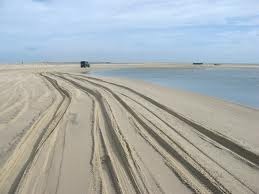 India is a country gifted with beautiful places; it is a land where the beauty of nature is interwoven with the mystery of mythology, enchanting the visitor and rendering him speechless with wonder. One such place that merits mention is Dhanushkodi in Rameshwaram, which is an island off the coast of Tamil Nadu in Southeast India. The island of Rameshwaram, also known as the Pamban Island, is in the Palk Strait stretching between India and Sri Lanka. One can cross over to the Pamban Island from the mainland by train or car along the Pamban Bridge, which is one of the seven wonders of India. This is a cantilever bridge that folds-up to let ships pass through. The wonder-filled journey to Dhanushkodi begins from this bridge, which offers a superb view of the Palk Strait stretching on both sides, dotted with fishing boats and far-off village lights.
India is a country gifted with beautiful places; it is a land where the beauty of nature is interwoven with the mystery of mythology, enchanting the visitor and rendering him speechless with wonder. One such place that merits mention is Dhanushkodi in Rameshwaram, which is an island off the coast of Tamil Nadu in Southeast India. The island of Rameshwaram, also known as the Pamban Island, is in the Palk Strait stretching between India and Sri Lanka. One can cross over to the Pamban Island from the mainland by train or car along the Pamban Bridge, which is one of the seven wonders of India. This is a cantilever bridge that folds-up to let ships pass through. The wonder-filled journey to Dhanushkodi begins from this bridge, which offers a superb view of the Palk Strait stretching on both sides, dotted with fishing boats and far-off village lights.
Dhanushkodi is a beautiful and serene shoreline to the south of Rameshwaram. The place attracts a traveler with its enchanting view and mysterious atmosphere. A small town flourished here once during the British times. There was a railway station, a church, and a temple, among other buildings – the ruins of which can be seen till date. This town was washed away by a huge tidal wave in 1964. The Tamil Nadu government has declared this place inhabitable, and the former quaint town has become a ‘ghost town.’
You can drive down to Dhanushkodi from Rameshwaram. It is advisable to take a four-wheel drive vehicle, as a part of the path is sandy on which two-wheel drive vehicles cannot ply. The first part of the drive is down a straight paved road with water bodies on both sides. On the right hand side, water is rough; on the left hand side, water is calm. As you approach Dhanushkodi, the road becomes sandy, and the ghost town is the last point of habitation where a thirsty traveler can get a drink. The town looks eerie with its remnants and takes one back to those days when it was a thriving port town. One shivers at the thought of how the end must have come to this small place.
Once you cross the ghost town, it is just water everywhere – with a stretch of beach running down the middle, and it is this stretch that the visitor travels down in the four-wheel drive vehicle. Caution! It is a very bumpy ride. But the ride is one heck of a ride worth every bump! As you travel down gripping the shore of the backwaters, you come across the breathtaking view of the sea shining with its beautiful shades of blue and green, and a golden strip of land stubbornly jutting into it, as if to defy the swirling waters around.
The aim is to reach the tip of this stretch of sandy shore from which Ram Setu or Adam’s Bridge starts. Ram Setu is the mythological bridge that Lord Ram is said to have got constructed by his troop of monkeys, to cross over to Lanka to defeat King Ravan, for rescuing Sita, his wife. Ram Setu is composed of floating coral reefs and shifting sand banks and is visible from an aerial view.
The tip of Dhanushkodi, which got its name from the fact that Lord Rama broke this end of the bridge with his bow, is a breathtakingly beautiful place where the Bay of Bengal and Indian Ocean meet. With pristine golden sands, foamy waves and white-headed eagles, it offers the weary traveler rest and relief from the maddening crowd and nerve-wracking tensions of daily life. You can sit in the lap of soft sand and gaze far-off into the horizon to become one with nature.
Dhanushkodi has multiple attractions for tourists. It is a paradise for bird watchers, sea lovers, and shell collectors. You get to see exotic migratory birds, which fly up from Australia; rare shells that will make you wonder at the craftsmanship of the sea; unique colors of the merging waters, and above all, profound peace. Dhanushkodi is a must-see destination of India and one’s lifetime.
About the Author: Sandeep Sinha has traveled 17 countries in Asia, Europe and North America. He loves to write on travel and poetry.
Thank you for reading and commenting. Please enter our next Travel Writing competition and tell your story.
The post Dhanushkodi – A Place of Myth, Mystery and Marvel appeared first on We Said Go Travel.
February 22, 2014
Russia: “Touching the magnificent city of Moscow.”
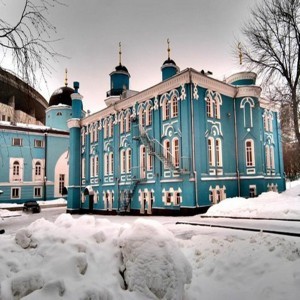 How could a place in northern Euroasia fettered by cold air, so soft and warm shows its beauty through exotic building, which scratched with thousand of history, full of meaning, and have value to its own gold in every location?
How could a place in northern Euroasia fettered by cold air, so soft and warm shows its beauty through exotic building, which scratched with thousand of history, full of meaning, and have value to its own gold in every location?
Oh Russia! you be the largest country that greets the world with its beauty. He dares to arrogantly told loudly and declared that he was so beautiful, so magnificent, so captivating. This country incised a wide range of places artsy, unpretentious town with beautiful architecture structure. First, He has Novgorod, city knights. Second, Magnificent city of St. Petersburg, with its legacy of history, the arts, its striking beauty, and third, he has Moscow, beautiful city which became the only capital city which has a tremendous beauty, with the buildings architecture Romanesque and Gothic style, arranged and well maintained. Beautiful, and classic.
That’s how I fell in love with Russia, especially the capital, Moscow. This swing was heavy breath, when told about Moscow. Heart rate seemed to want to stop, let the greatness city of Moscow rake every a beautiful creations. How I fell in love with downtown Moscow Kitay Gorod, where the Kremlin and Red Square are on it. Kremlin, classic and beautiful. Accompanied by the Cathedral of St. Basil makes Kremlin became legendary. Yet again, the red square is juxtaposed with the beautiful old buildings, as if to say that the Red Square is always “live” day and night. Moscow so inspiring everyone to spend the rest of his time there. Their beauty is not lost by rain and did not recede by heat.
Collaboration beauty moscow, also carried by the magnificent Moskovskiy gosudarstvennyiy universitet ( MGU ) that look so pretty towering buildings typical of Stalin’s regime . MGU building is the largest building in Moscow . He become the one of the seven main building, skyscrapers.
Not perplexed the moscow city boasted beauty, even to the station in the city is laid out so pretty made combination of a palace. I want to walk down the station throughout Moscow. It seems to want to spend the night on the marble Smolenskaya subway station. Nearly three-quarters of its walls clad in marble ornament, very beautiful. A five-star luxury combined with typical Russian Orthodox church ornaments. Likewise Arbatkaya station, which was finished giving his charm to anyone who wishes to visit. The station is wrapped by the beauty of the interior edifices curve. The floor is clean, dark brown natural marble, make people envious want to go though only to a station Arbatkaya Russia moscow.
No word of regret, to people who’ve been to Moscow. Even the birds are always going from one country to another was respectful with Moscow’s beauty. That’s why it seemed to be eager to go to Moscow to see the whole of what is there wrapped by a very stunning beauty.
Te a mo* Moscow. Falling in love is deeper, especially of the vast developing its Christian Orthodox in Russia, Islam was born as the second largest religion. For the first time, how different religions in a country, can walk hand in neat and harmonious.
I think I want to travel to a mosque in Moscow, which will create serenity, in the middle of a very European-style architecture, which will be wrapped with the solemn chanting of Al Quran, which reverberate there. I want to know, how the beauty of the mosque there, wrapped breath of Islam, to its adherents
People say, there are five mosques in Moscow, including the Balsoi Tatarski Mosque, mosque Prospet Center Mira, then there is a mosque in the museum complex struggle Kutuzovski, and two other mosques located in Otradnoye Rayon. What is interesting in Rayon Otradnoye, it is the fact that the mosque, located in a complex places of worship of other religions, it means that the mosque side by side with the Orthodox Church and Synagogue. Oh how beautiful Islam is present there.
Of the five mosques, religious places I most wanted to visit was Moskovsky Soborni Mechet (moscow mosques) who can prove that in Moscow there really is a mosque. How the turquoise-colored building, towers sickle tapered with rounded edges, it is formed into a unified whole of the grand mosque for Muslims in the city of Moscow, the largest mosque in the five mosques. Heart felt desire is already booming uncontrollably want to go to Moscow, a place which will give a lot of inspiration and religious values, which is high.
If I can touch the beauty of Moscow .
*it means I love you
About author : Desy Faryani is my complete name, I’m 20 years old. I am currently studying at the academy chemical analysis Bogor. Very fond of children and I liked the discussion. my page :
Thank you for reading and commenting. Please enter our next Travel Writing competition and tell your story.
The post Russia: “Touching the magnificent city of Moscow.” appeared first on We Said Go Travel.
Big Sur, California
The term “staycation” is often utilized for time-bereft people looking to eke out a few days of sanity in their stressful version of this world. We were recently blessed with our second baby girl and decided to take the two-year old and the two-month old on a camping trip to Plaskett Creek- in winter.
I’ve visited here for bachelor parties and man-cations, backpacking treks and weddings, impromptu dates and solitary stare-off-in-ennui-searching-the-horizon trips.
Big Sur is a world famous landmark, as if we could own and pinpoint such a vast natural universe. I am lucky to call it my backyard, one I hop into like Europeans weekend in Rome or Paris whenever they wish due to the proximity of their countries.
As I aged I have learned to morph with malleable time and shape it into my own rainbow glaze no matter where my travels take me, even if it means shorter distances and staying local.
Having a young family is not the end of all things. Being married with kids is not a sacrifice but a shifting of gears, a speeding up if you part the fog of fear trying to arise and muffle you. We’re just getting started.
Overseas or in my mind, in the turning pages of a book or the quiet respiration of a sleeping babe, I step over the messy, cluttered house and into any fantasy I choose because we make it real- my wife and I together. Big Sur reinvigorates us.
We had made this same tent camping trip with our first baby and she banshee shrieked the entire night, every hour, like frat party voices disturbing the tranquil wind, a harsh motorcycle barreling down Highway One or the constant crash of pounding waves from Sand Dollar Beach.
But she was even louder and higher pitched.
The weather didn’t forecast rain but we prepared for a frigid nighttime temperature drop and piled blankets, comforters and firewood. The prior experience did not weigh too heavily on our minds, the same way a traveler tries to displace and detach themselves from the squalls of an infant on a long airplane flight. We’ve all been there and handled it with honor, sympathy, shushing or a (hopefully) quiet rage.
We needed to get out of the house and erupt our dormant routine, strike our static doldrums in a volcanic cascade of embers and ash. At naptime we made the two-hour drive, quickly stopping at Ragged Point and Gorda for sandwiches, beer and the not so secret ingredients for S’mores, a must have for any outdoor adventure.
The children remained quiet and regal as redwoods.
The campground was in off-season mode so we had our pick of the choicest sites. The hosts and a few scattered neighbors were jolly and welcoming, if not surprised to see the tiny baby, toddler and golden retriever running dark circles around their parent’s tired eyes.
We made burritos, rode tricycles, played ball and hiked to the beach. There were books but no electronics. It was busy and fretful, the setting up and activities, but in a sore and fatigued after a good workout sort of way.
We befriended a foreign couple that spoke in charmingly broken English. They happily played with our dog and oldest daughter. They were from Norway and were driving from Los Angeles to San Francisco via the Pacific Coast Highway. They joined us at the fire for a while as the light ebbed to scented shadow, swapping travel stories and learning how to craft the perfect S’more, an obviously American invention.
That night my wife retired early in cuddled warmth with the baby. My two-year old and I stared in wonder at the fire and recapped the highlights of a perfect day in giggles and charades. She fell asleep in my arms, watching the flames lap, spark, smolder and recede into the unquenchable glow of memory.
I have treaded the antique cobblestones in Lisbon learning the romantic Portuguese language, reflected in the ruins of Machu Picchu and summited the magical glaciers of Mount Kilimanjaro.
But I would rather be here, in Big Sur, alongside my family on a “staycation” then anywhere else in the world.
Oh, and both kids, burrowed next to their ecstatic parents, slept peacefully throughout the crystalline night.
About the Author: Joe Amaral is a paramedic who spends most his time spelunking around the California Central Coast. His poetry and short stories have been published worldwide in many awesome journals and anthologies in print and online.
Thank you for reading and commenting. Please enter our next Travel Writing competition and tell your story.
The post Big Sur, California appeared first on We Said Go Travel.
A Life Without Limits in Koh Phi Phi, Thailand
 At the moment I live on an island called Koh Phi Phi in southern Thailand. Having spent the last year backpacking Asia I began running low on funds so after hitch hiking/couch surfing my way up Malaysia (hair raising at times but definitely worth it) I found myself with an English girl and an American girl, freezing our tootsies off in a McDonalds in Phuket, stealing the air con and wifi in return for buying a cheeseburger every hour, waiting for the first boat to the infamous Phi Phi island. That was five months ago, and I haven’t worn shoes or seen a car since.
At the moment I live on an island called Koh Phi Phi in southern Thailand. Having spent the last year backpacking Asia I began running low on funds so after hitch hiking/couch surfing my way up Malaysia (hair raising at times but definitely worth it) I found myself with an English girl and an American girl, freezing our tootsies off in a McDonalds in Phuket, stealing the air con and wifi in return for buying a cheeseburger every hour, waiting for the first boat to the infamous Phi Phi island. That was five months ago, and I haven’t worn shoes or seen a car since.
Koh Phi Phi is the island of lost souls. She’s exotic, enticing and wild in the best kind of ways.And she offers a haven for those often labelled ‘eccentric’, amongst other things. Everyone who spends a substantial amount of time here is either running from something or looking for something. And that’s not as menacing as it sounds. All it means is that life’s extremities end up living here together, sparkling and adrift, on an island where anything goes. We live a life without limits.
During the day we may sell boat tickets to Maya bay, where they filmed “The Beach”, and in the meantime get to meet the passing traffic of characters weaving their way through the islands. Life for me is stories, making them, telling them and hearing others, even if they don’t buy a boat ticket from me they’ve already given me so much by sharing with me something of them that I could never have known before. And in return I can tell them where the most beautiful lagoon on Phi Phi is hidden, as long as they seem like they can handle a kayak, and won’t throw their cigarette butts in the ocean as it kills sea turtles. Turtles do not know that cigarette butts look exactly like what they eat but will then swell up in their throats eventually killing them.
During the night we dance and smile, and through the haze of smoke from the fire shows watch the lithe bodies of the Thai fire boys gyrating and glistening with sweat and gasoline. It’s a hedonistic and seductive energy weaving its spell all around at night here.
And anything goes, there’s no secrets on this island. You may think you’re walking alone but then you notice the twinkle of eyes hidden in the dark, the flash of a smile from a closed bar, the murmur of voices with no bodies. Nothing here goes unseen, you can be sure of that.
The next day paradise is reborn, the sun bleaches away the sins of the night before, the cheerful chattering of the Thais can be heard as stalls and shops are opened. A fresh batch of starry eyed backpackers will step off the ferry into wonderland, and our open arms. If we don’t feel like going to work one day, we don’t go to work. There is no deadlines, no restrictions, no conforming, no judging.
When I speak to people about my life and how I’m choosing to spend it currently the most common reaction I get is “I’m so jealous”… But there’s no need to be, it’s easy. It’s just being brave enough to give up what society says is right and normal. I have no money really to speak of, the only material possessions I have can fit into a backpack, but life here is beautiful, everyday I learn/see/sponge up things I could never even have believed existed. Anyone can join, and paradise is our playground.
About the Author. My name is Niki, and I’m a bit of a wanderer I suppose. I wilt and die in 9 to 5 office environments so I’ve given them up completely.I have an appalling taste in boyfriends which means I’m usually running away from them to new and beautiful corners of the world. I love to write, draw and talk.
Thank you for reading and commenting. Please enter our next Travel Writing competition and tell your story.
The post A Life Without Limits in Koh Phi Phi, Thailand appeared first on We Said Go Travel.
February 21, 2014
The Ashmolean in the UK
In 1990, I made my first trip abroad: a few days in Amsterdam, a few in London, with a side-trip to Oxford to see the Ashmolean Museum. That side-trip became the highlight of my time in Europe.
The Museum itself, like so many others, is a beautiful and imposing building: an Ionic-columned entrance leading to the massive interior that houses an astonishing collection of art. And it was inside that the several things happened which will endear the Ashmolean to me forever.
I’m a playwright. The primary purpose of my visit was to do research for a play about Lizzie Siddal, the Pre-Raphaelite model (she was the icon for Millais’ Ophelia) and painter, and wife of Dante Gabriel Rossetti, whose small but extraordinary oeuvre fascinated me.
The Museum has an extensive collection of drawings (including a large handful of Siddal’s) it maintains in “books”: large folios in which numerous artists’ smaller works are carefully matted (protected only by the thin sheet of tissue-like parchment that separates each from the next), but allow a viewer to turn the “pages.” Amazingly, the Library permits the folios to be studied, without supervision, at tables.
I’d made an appointment and asked for the volume containing Siddal’s. I was thrilled and more than a little awed when the librarian handed it to me (with a set of white gloves): I held in my hands drawings by Siddal and other Pre-Raphaelites, each well over a hundred years old. Each sui generis. Each priceless.
I spent several hours poring over the folio, trying to capture — as writers will — the moments, the circumstances, the feelings behind the creation of the drawings: Sometimes in looking at a drawing or painting, I’m fortunate to have a sense of being able to see through the artist’s eyes as though I were standing over her shoulder, seeing the subject as she sees it and watching the work evolve from concept to inchoate to finished form. This was, indeed, the case here, especially since I knew it might well be the only opportunity I’d ever have to view — much less hold — these particular pieces. Frankly, I cried — lover’s tears — carefully, so as not to allow them to fall to the page.
When I returned the folio, the Librarian thanked me and asked “Are there others you’d like to see?” That possibility hadn’t occurred to me: I’d come to see Lizzie’s work. Seeing any other artist’s drawings, especially in a virtually private viewing, would be pure gravy.
But, as I’m a huge van Gogh aficionado, I asked if there were any of Vincent’s. “Oh, of course,” she replied and, in a matter of moments, she handed me the folio which contained a half dozen of his earliest drawings, none of which I had ever seen. I pored over them as well with the same intensity, and the same sense of privilege, returned the volume and, my time now limited, left the Library to see the Raphael exhibition: a roomful of huge drawings, each ten or more feet high. It was my first meaningful exposure to Raphael’s work, and it was breathtaking, the sort of experience that has not only stayed with me but has changed the way I look at the world in general and the world of art in particular.
I left with deep regret, knowing I’d not return for years, if ever, but knowing too the experience was imprinted. It is fair to say that I fell in love with the Ashmolean for the impact its collections had. Whether I return or not, that love will stay with me in the same way that my love for Art, Theatre and a handful of people stays with me, as enduring testimony to those Things That Really Matter.
About the Author: Evan Guilford-Blake’s poetry, prose and plays have appeared in numerous print and online journals, as well as several anthologies, winning 17 contests. Penguin has issued his novel “Noir(ish),” and twenty-three of his plays have been published, winning 41 competitions. He and his wife (and inspiration) Roxanna, a healthcare writer and jewelry designer, live in the southeastern US.
Thank you for reading and commenting. Please enter our next Travel Writing competition and tell your story.
The post The Ashmolean in the UK appeared first on We Said Go Travel.
Available: A Life in the Philippines
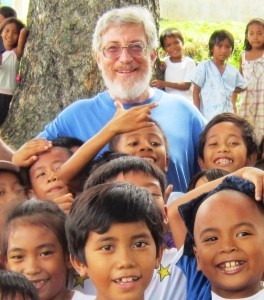 Available: A Life in the Philippines
Available: A Life in the Philippines
by
B.J. Stolbov
Mortgage, insurance, car, gas, electricity, water . . . drowning in bills, bills, and more bills . . . money going out and out . . . oh, what to do. . . . What to do?
Three years ago, I joined the Peace Corps. I sold or gave away most of my stuff. (Don’t worry: stuff is replaceable.) I took a backpack, my little bit of courage, a lot of trust, and I moved to the other side of the world.
I have two suggestions for you. Suggestion #1: The Philippines. I live in northern Luzon in a beautiful province called Quirino. It’s a quiet, peaceful, rural province. It reminds me of Northern California, only with coconut palms and papaya trees. The people are warm, friendly, and hospitable. (Hospitality is THE cultural trait of the Filipinos.) The Filipinos will invite you into their homes and treat you like family. You’ll not go hungry here (we often eat six times a day), and the food is simple and good. The living is relaxed and tranquil.
And it’s incredibly inexpensive to live comfortably here. I live with a Filipino family in a lovely house. For room and board, I’m paying 4000 Philippine pesos a month. (The current exchange rate is 45 pesos/dollar.) So, I’m paying per month $88.89 (that’s no typo!). The Peace Corps gives about 8000p ($177.78) per month to live on and I’m living well.
The weather in Quirino suits my bones. It rarely gets below 60°F or above 90°F. You won’t have to spend much on clothes. T-shirts, jeans, and sandals will cover most of your needs. You’ll rarely need anything more formal than a polo shirt and shoes.
It’s also astonishingly fertile here. Good food is readily available and inexpensive. As an agricultural province, there are vegetables and fruit growing all year round. I eat fresh vegetables and fruit every day. A kilo of sweet bananas is 50p ($1.11), a kilo of ripe mangoes is 35p (.78), and a fresh-picked, ripe pineapple, in season, is 12p (.27). Rice (you’ll eat a lot of rice) is 35p/kg (.35/lb). I eat a lot of free-range native chicken (150p/kg = $1.52/lb) and fresh-caught fish (120p/kg = $1.21/lb).
This is a lovely place for a quiet writer like me. I’ve met many wonderful people in my community, at schools, town halls, municipal and provincial fiestas, and churches, at christenings, on birthdays, graduations, wedding days, anniversaries, going-away parties and coming-home celebrations, illnesses, and even funerals. I know many more people than I did three years ago, and more people know and like me. I love this place, but it may not be very exciting for you.
If you want to see a more exciting place, six hours from here, in northwestern Luzon is Baguio City. The foggy, hilly, “City of Pines,” the “San Francisco of the Philippines,” Baguio, the most American of Philippine cities, was built by Americans for Americans during their years as the colonial occupiers of the Philippines. This is “The Summer Capital of the Philippines” because it’s high up in the mountains, cool in the summer, and “cool” all the time.
Everything you could want in a small city (population 300,000), you’ll find in Baguio. A good apartment is between 8000p – 15000p ($177.78 – $333.33) per month. Hotels, restaurants, cafes, and bars are plentiful. Local beer is 30p (.67) a bottle and a 250ml (about 1 pint) bottle of Philippine rum is a bargain at 28p (.62). Baguio is also the center of the “Salad Bowl of the Philippines.” Organic lettuce, cabbage, and broccoli, in-season, are only 25p per kilo (.25/lb.).
Recently, I met an American, who had moved to Baguio from Hollywood, California. She told me she was getting a Social Security check of $2000 per month, which is 90,000p per month, and “I cannot possibly spend it all.” Don’t forget that your Social Security check, pension, or 401K Distribution can be cashed anywhere in the Philippines!
Suggestion #2: A life. Get away from the American materialist trap. Get away from the fastest cars, the biggest televisions, the smallest computers, the newest electronic gadgets, the endless rat race. What’s valuable in the Philippines is time for family, friends, neighbors, and the simple joy of being alive. Life is not about acquiring more things or money; it’s about opening your heart and soul.
I didn’t join the Peace Corps and move to the Philippines to save money (that’s a surprise). I volunteered to change my life (and, I hope, some others’ lives as well). I’ve learned here that life can be simple: food, clothing, shelter, friends, family, community . . . , and enthusiasm, a passion for living, and a desire to live a truly meaningful life.
About the Author: B.J. Stolbov is a writer, poet, essayist, novelist, short story writer, travel writer, technical writer/editor, and improving photographer. He lives and works in the Philippines, and travels and explores throughout Southeast Asia. He teaches English and writing, and is available for writing and teaching positions.
Thank you for reading and commenting. Please enter our next Travel Writing competition and tell your story.
The post Available: A Life in the Philippines appeared first on We Said Go Travel.
We Said Go Travel
We Said Go Travel is a global community of over sixteen hundred writers with articles from every continent.
Stories are shared with photos and video from a perspective of the transformative power of travel. We Said Go Travel has hosted live and online events as well as travel writing contests around the world. ...more
- Lisa Niver's profile
- 57 followers



